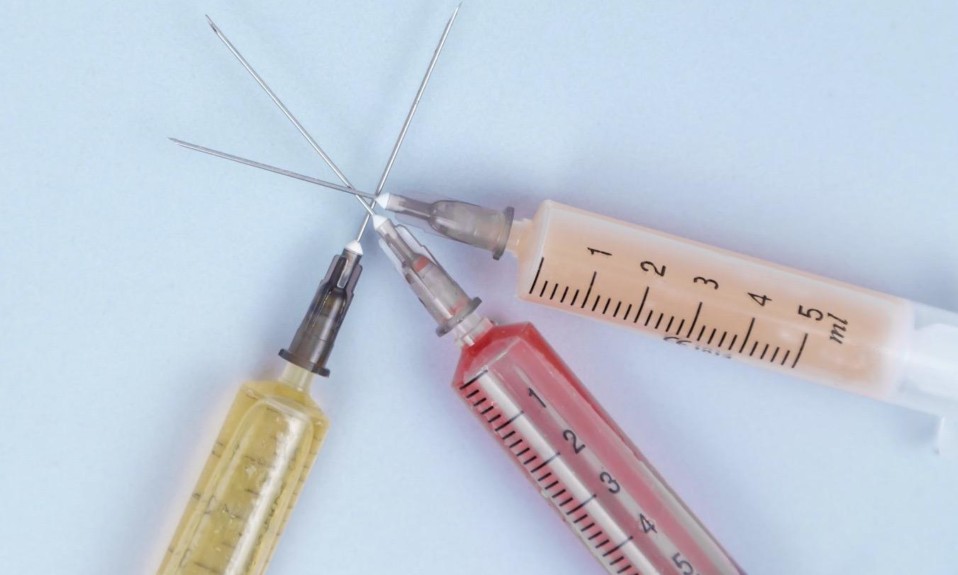The nonpartisan think tank calls for comprehensive state authorization and additional funding for SSPs
By Jason Langendorf
As advocates and lawmakers work to remove illicit drugs from the streets and deliver addiction treatment to those who need it, their simultaneous support for syringe programs can be baffling and upsetting to some in the public.
But a new brief released by the Pew Charitable Trust provides evidence of the efficacy of syringe services programs (SSPs), explains their value to public health and positive cost-benefit effects, and offers guidance to policymakers in states that have yet to authorize SSPs.
When people who use injection drugs come to the SSP services, they’re availing themselves of a service that’s opening up a door where they can be connected to other types of social services—to healthcare, for instance—that are so important.”—Beth Connolly, project director, Pew Charitable Trust’s Substance Use Prevention and Treatment Initiative
Recent restrictions on prescribing policies that were intended to help stem the opioid epidemic have inadvertently led to a rise in the use of heroin. Because injectable drugs (such as heroin) are associated with a higher incidence of overdose and can lead to infection and disease transmission when needles are shared, SSPs can provide safer, sterile alternatives that reduce hospital admissions and contact with the criminal legal system. They can also be the first touchpoint in helping people seek long-term treatment.
“There’s certainly a stigma around syringe services programs,” says Beth Connolly, project director of the Pew Charitable Trust’s Substance Use Prevention and Treatment Initiative. “Aren’t you just enabling people to use drugs by providing them the tools? But setting up these barriers to [creating] and funding SSPs is really a result of stigma and not understanding why certain services programs are so important and how they save lives.”
Pew Data on Syringe Programs
Pew reports that 19 states, including 14 that are experiencing or are at risk for opioid misuse outbreaks, still have not explicitly authorized syringe programs. Meanwhile, some other states that permit SSPs have failed to fund them properly.
“There’s a lot of misinformation—We’ll have needles all over the park!—which has not shown to be true,” says Connolly. “And these types of perpetuating myths really do just reinforce the stigma around SSPs. When people who use injection drugs come to the SSP services, they’re availing themselves of a service that’s opening up a door where they can be connected to other types of social services—to healthcare, for instance—that are so important. And they’re in a place where they feel welcome. When they feel comfortable in a particular place, they feel more comfortable about utilizing the other services that are provided there.”
Pew outlines its recommendations to state policymakers who have yet to authorize or embrace funding of SSPs as follows:
- Permit SSPs to be established and operate according to best practices
- Pass legislation that authorizes SSP implementation
- Prevent local limits on syringe distribution by requiring unlimited need-based syringe exchange
- Minimize administrative burdens (e.g., data collection) that hinder program operation and jeopardize participant anonymity
- Reduce participant interactions with law enforcement
- Exempt syringes and other safer-use materials (e.g., cookers and tourniquets) from drug paraphernalia statutes and regulations, and decriminalize their possession and distribution
- Train law enforcement on the efficacy and legal status of SSPs
- Fund SSPs to cover materials and operations costs, including the purchase of syringes
- Facilitate opioid use disorder (OUD) treatment by allocating state funds or federal grants so SSPs can provide buprenorphine, a Food and Drug Administration (FDA)-approved drug for the treatment of OUD
The Benefits of Syringe Programs
SSPs are proven to reduce the harm of injection drug use and help connect at-risk people with treatment and other health services. Crucially, in terms of winning over skeptical policymakers and segments of the public, SSPs are also fiscally beneficial.
The Centers for Disease Control and Prevention (CDC) cites a study that found the cost-effectiveness of a New York City needle exchange program “would result in a baseline one-year savings to the government of $1,300 to $3,000 per client.” Another analysis estimated that expanding access to clean syringes as part of an additional $10 million investment would yield, nationally, a lifetime treatment cost savings of $75.8 million—or a return on investment of $7.58 for every dollar spent.
Says Connolly: “Certainly the lower cost of the syringe services programs really does seem to outweigh the expensive cost on the public health side for diseases that happen when people share needles.”
Photo: Diana Polekhina














